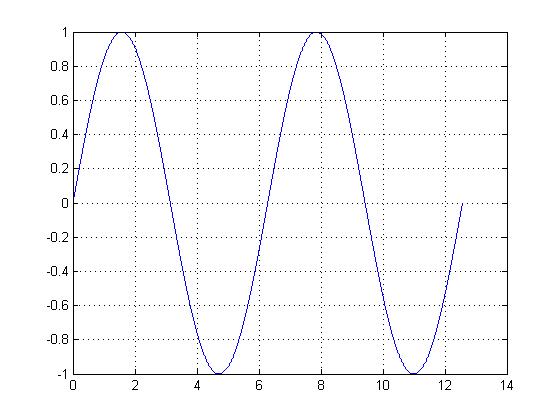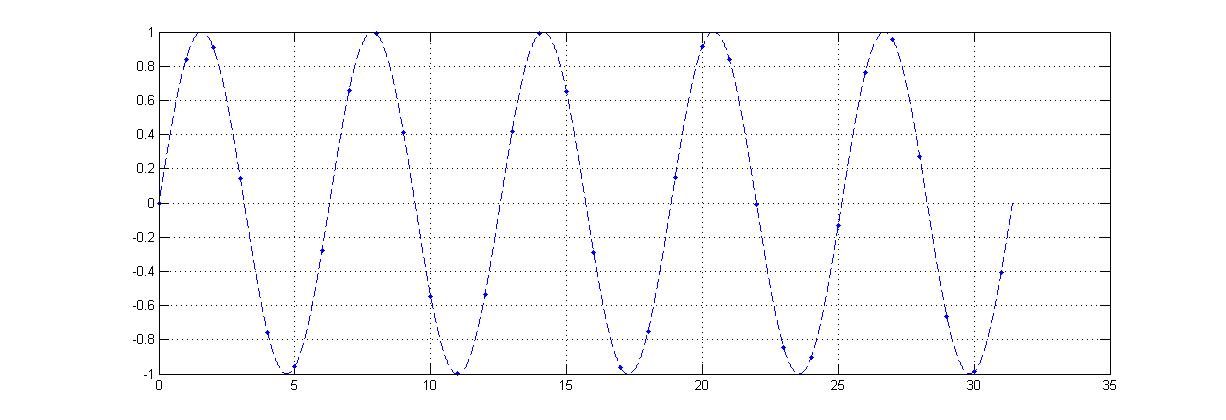| Line 11: | Line 11: | ||
[[Image:hw2a1c_blaskows_ECE301Fall2008mboutin.jpg|frame|center|300px|The non-periodic discrete-time function <math>x[n]=sin(n)</math>.]] | [[Image:hw2a1c_blaskows_ECE301Fall2008mboutin.jpg|frame|center|300px|The non-periodic discrete-time function <math>x[n]=sin(n)</math>.]] | ||
| + | |||
| + | |||
| + | ==Part 2== | ||
| + | To be completed... | ||
Revision as of 08:17, 9 September 2008
Part 1
One can take a signal that would be periodic in continuous time and turn it into a signal that is not periodic in discrete time. Consider the continuous time signal $ x(t)=sin(t) $. Plotting this signal yields a smooth waveform that repeats itself with period $ T=2\pi $.
Sampling this signal at every integer time yields something altogether different.
The new discrete time function looks like this on its own.
Part 2
To be completed...




